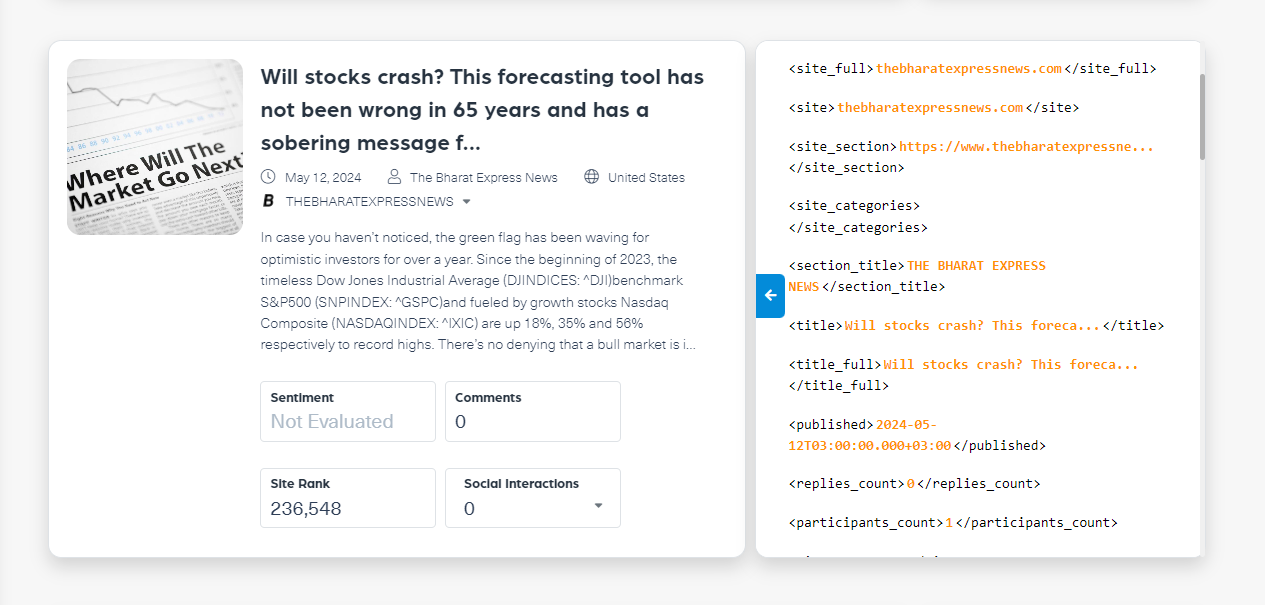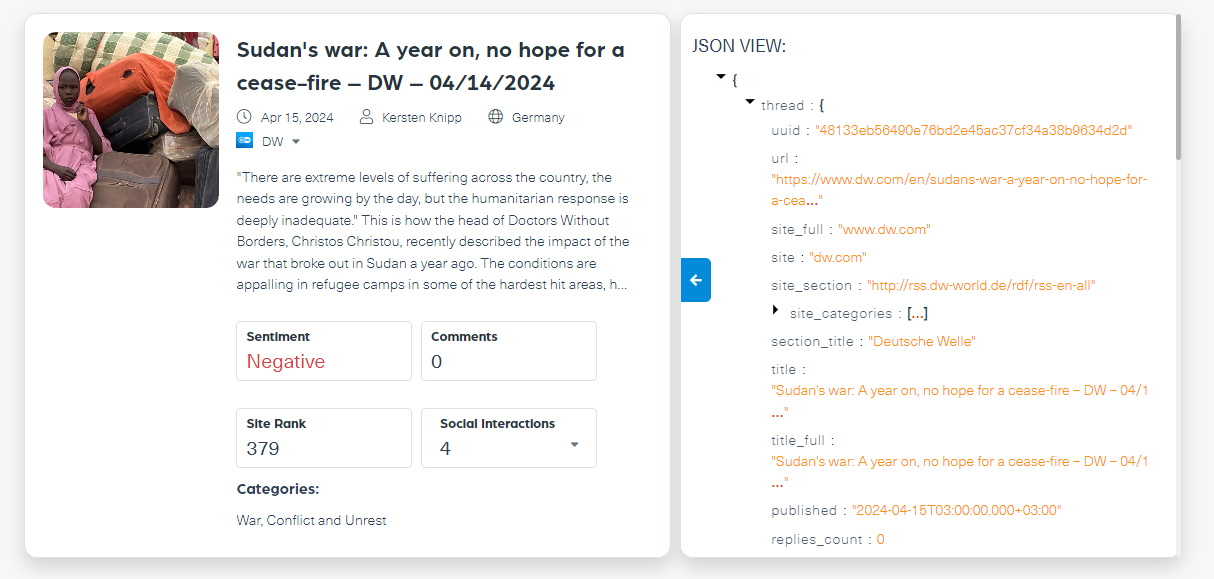How to Automate Supply Chain Risk Reports: A Guide for Developers
Do you use Python? If so, this guide will help you automate supply chain risk reports using AI Chat GPT and our News API.

News APIs connect applications to online news content and power many kinds of platforms — media intelligence, sales intelligence, financial analysis, regulatory compliance tracking, and the list goes on. Most providers offer news API responses in both JSON and XML, but developers overwhelmingly choose JSON over XML. This article delves into why so many developers prefer JSON as the format for news data delivery.
XML stands for Extensible Markup Language. The W3C created it in the late 1990s as a means of representing structured documents on the web. Most web documents are structured, e.g., paragraphs, images, lists, and links. It was commonly used in early web services and applications. Later, developers began using XML to represent structured data, and they created standards like DOM (Document Object Model) where XML objects are represented as ordered tree structures. Many developers find XML challenging to use with most programming languages because of its tree structure.

JSON stands for JavaScript Object Notation, and it is an open data interchange format created by Douglas Crockford in the early 2000s. He broke out the data structure part (object model) of the JavaScript programming language to create JSON. JSON was designed to handle different data types, natively supporting string, number, null, object, array, and Boolean (true or false). JSON uses key-value pairs to represent structured data, which is much simpler for programming languages to work with than ordered trees.

Applications and platforms that leverage a news API often require real-time news data or numerous global news data sources. Users of news-powered applications also tend to expect high speed and performance. JSON enables developers to meet these requirements. Other reasons developers often choose JSON over XML include:
These are the primary reasons developers of news API-powered applications prefer JSON. However, developers choose JSON over XML for many other reasons.
Discover the World’s Leading News API
XML is a structured document format, and JSON is a structured data format. JSON is ideal for APIs as most of them use structured data, not structured documents. The table below shows other key differences between JSON and XML.
| JSON | XML | |
|---|---|---|
| Abbreviation meaning | JavaScript Object Notation | Extensible Markup Language |
| Designed for | Representing structured data | Representing structured documents |
| Data representation | Key-value pairs | Ordered tree pattern |
| Supported data types | Most common: string, number, null, object, array, Boolean (true or false) | Most common: string, integer, decimal, Boolean (true or false), date, time, namespace |
| File size | Doesn’t use tags, more compact than XML | Tag structure resulting in larger file sizes |
| Parsing | Can parse with a standard JavaScript function, faster to parse than XML | Requires XML parser, often slow and complicated to parse |
| Overhead | Doesn’t require namespaces, schemas, or complex data types reducing overhead when working with data | Requires namespaces, schemas, and often complex data types, increasing the overhead for data transfers |
| Readability | Simple syntax and format. Easy for humans and machines to read | Machine-readable. Data enclosed in opening and closing tags, making it harder for humans to read |
| Compatibility | Supported natively in many programming and scripting languages. Compatible with many frameworks and libraries | Compatible with many legacy systems and various programming languages |
| JavaScript support | Derived from JavaScript so natural fit for JavaScript applications | Derived from SGML. Difficult to parse with JavaScript. JavaScript XML parsing libraries available |
| Security | Very secure as long as you use modern programming techniques and best practices | XML structure vulnerable to unauthorized modifications if you don’t turn off DTD feature in transmission |
| Adoption | Widely adopted. Many developers use JSON for APIs. Ubiquitous in web-based applications | Still commonly used, although not as widely used for APIs as JSON |
| NoSQL Databases | Popular for NoSQL databases. Easier to implement schema changes compared to traditional row-columns format | Some NoSQL databases use XML. Useful for cases that require strong schema validation or involve heavily structured data |
As you can see, developers prefer JSON to deliver news data for many reasons. JSON is ideal for applications that require high volumes of real-time news data. It helps with improving the speed and performance of platforms and applications. Plus, most developers find it much easier to work with than XML. Our Commercial News API and Free News API Lite return JSON by default. Our Commercial News API also includes XML, RSS, and CSV formats. Whether JSON or XML, you can choose the best format for your application! Interested in learning more about our News APIs? Talk to one of our experts.

Do you use Python? If so, this guide will help you automate supply chain risk reports using AI Chat GPT and our News API.

Use this guide to learn how to easily automate supply chain risk reports with Chat GPT and news data.

A quick guide for developers to automate mergers and acquisitions reports with Python and AI. Learn to fetch data, analyze content, and generate reports automatically.